From A to X – all the different cars that could have, and did, become the AMX
Posted on Apr 23, 2018 in Featured | 2 comments
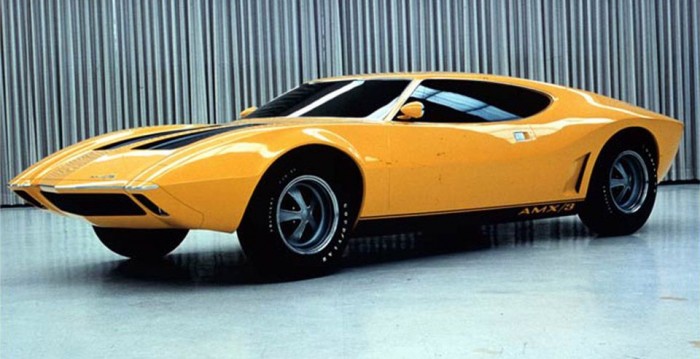
AMX/3 pushmobile. AMC photo.
Between 1965 and 1981—a relatively short 16 years—American Motors had no shortage of mockups, prototypes and production cars that carried the name AMX. One would think, given that American Motors designers kept appending suffixes to the various iterations, that they had some sort of naming convention in mind, but as it quickly becomes evident after studying the different versions, the designers didn’t. Instead, a whole cornucopia of AMXs arose, and it’s about time we sat down to sort them all out.
One part registry, one part history of the name, it’s an assemblage of more than two dozen unique iterations of the AMX that AMC built in fiberglass or steel, either intended for the market or not. Chris Zinn’s AMX Photo Archive: From Concept to Reality provided much of the background, but we’ve also filled in some gaps through other sources, cited where appropriate.
For clarity, we’ve also substituted some unofficial names to distinguish some of the versions. Unless specified otherwise in AMC materials, we’ve taken the official names of the cars from badges, license plates and other identifiers AMC affixed to the cars. Take a look through here and let us know if you have anything to add.
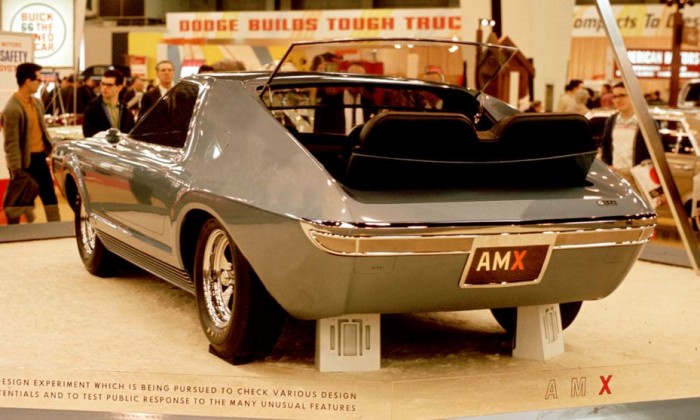
Photo courtesy Chicago Auto Show.
Chicago Auto Show AMX (January 1966) — While it officially debuted at the Society of Automotive Engineers convention in Detroit that January, the first time the public laid its eyes on the first AMX show car was at the Chicago Auto Show a month later. Based on a design by Eric Kugler, the AMX was a two-door sports car with a cantilevered roof and the famed Rambleseat. Originally painted silver-blue, it later sported candy apple pearl red paint. Never operational, it was simply a fiberglass pushmobile. Donated by AMC to the Crawford Auto-Aviation Museum in Cleveland.
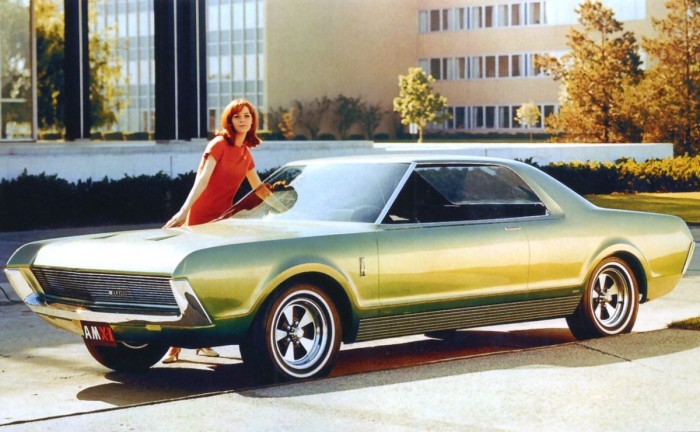
AMC photo.
AMX II (June 1966) — Part of the Project IV series of show cars, the AMX II (also referred to by AMC as the AMX-II) was a two-door hardtop sedan with four-passenger seating designed by Vince Gardner, Eric Kugler, Jack Kenitz and Bob Nixon. Painted metallic green. Likely a pushmobile as well. Fate unknown.
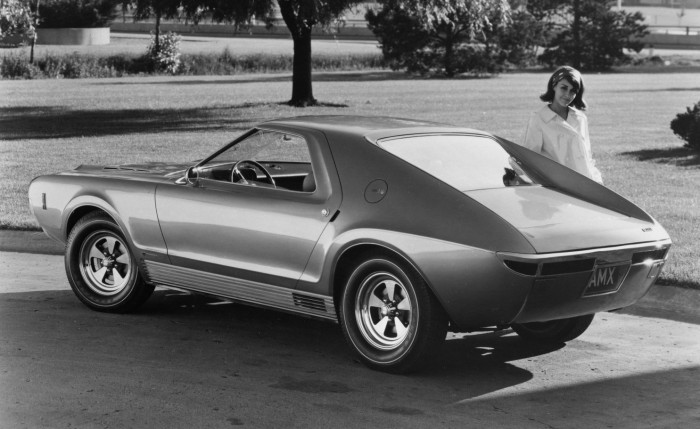
AMC photo.
Vignale AMX (June 1966) — Also part of the Project IV series of show cars, the Vignale AMX was crafted in metal by Vignale in Torino, based on a 1966 Rambler American shipped to the coachbuilder. Debuted at the New York Auto Show. Like the Chicago Auto Show AMX, it was based on Kugler’s design, incorporated the Rambleseat and was originally painted blue; unlike the Chicago Auto Show AMX, it was a running and driving vehicle and had pushbutton doors instead of external door handles. Later painted white. Currently owned by Canadian collector Fred Phillips.

Photo by Jeff Koch.
Fiberglass AMX prototypes (1966) — As many as three were built from fiberglass by Smith Inland of Ionia, Michigan, with the Rumbleseat, at AMC chairman Robert Evans’s request to make the AMX more Corvette-like. All but one destroyed during testing; the last remaining prototype sold to AMC employee Domenick Jiardine, currently owned by Jiardine’s relatives, Austin and Lee Hagerty.
AMX-2 (August 1966) — Name applied to pre-production fiberglass-bodied AMXs shown in-house.
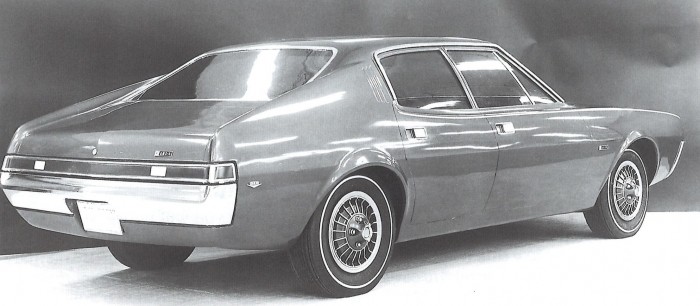
AMC Photo.
AMX-4 (February 1967) — According to Zinn’s Javelin Photo Archive: From Concept to Reality, AMC mocked up two versions of a four-door Javelin—a post sedan and a hardtop sedan – but only the first was badged AMX-4. Presumably a pushmobile, never shown to the public. Fate unknown.
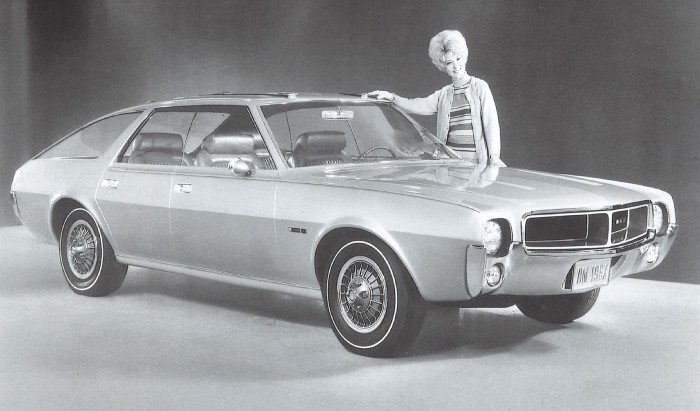
AMC Photo.
AMX III (April 1967) — Javelin-based fastback sports station wagon first shown at the New York Auto Show. Designed by Bob Nixon, constructed as a pushmobile. Fate unknown.
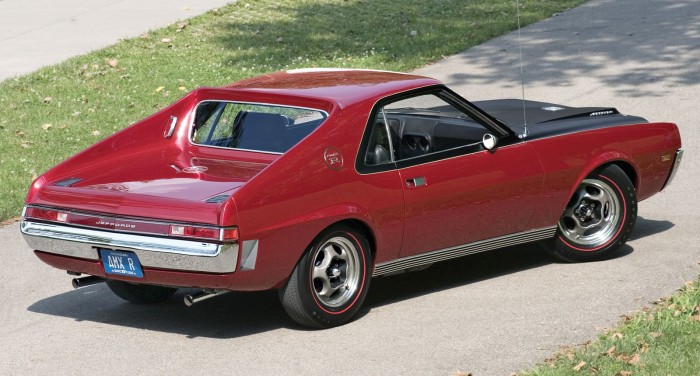
Photo by the author.
AMX-R (March 1968) — Also known as the Jeffords AMX, an independent effort to market a modified production AMX with the concept’s Rambleseat. Only one built, sold by AMC to the Brooks Stevens Museum, currently owned by Darryl Salisbury.
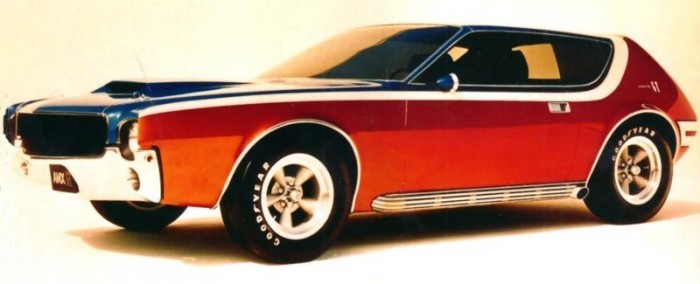
AMC Photo.
AMX GT (April 1968) — Chopback version of the AMX first shown at the New York Auto Show. Built as a fiberglass pushmobile. Painted in candy apple red with a white stripe and blue upper. Shown with both full disc wheels and mag-style wheels. Fate unknown.
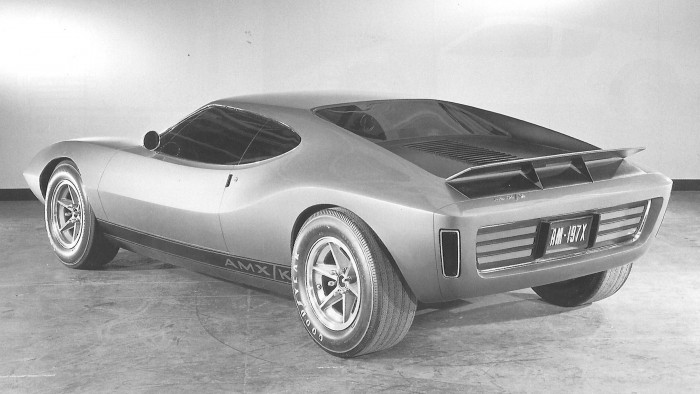
AMC Photo.
AMX/K (1968/1969) — Began as an unofficial in-house project to race a mid-engine car at Le Mans. Based on a design by Eric Kugler, it saw a number of iterations before eventually making it to the fiberglass stage. Shown in-house as early as April 1968 (as the AMX) and as late as August 1969 (as the AMX/K). Fate unknown.
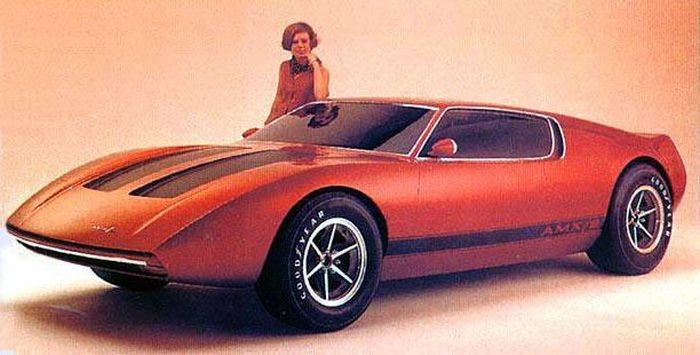
AMX/2 pushmobile. AMC photo.
AMX/2 (February 1969) — An evolution of the AMX/K mid-engine sports car concept, designed by Bob Nixon and Fred Hudson. First shown at the AMC stockholders meeting in early 1969, then made its public debut at the Chicago Auto Show as a pushmobile fiberglass car. Later mounted atop a pole in front of the Twin Pine Auto Sales used car lot in Ephrata, Pennsylvania. Currently owned by Canadian collector Fred Phillips.
Giugiaro mockup (early 1969) — Modeled by Giorgio Giugiaro in styrofoam for AMC as a proposal for a mid-engine sports car. Fate unknown.
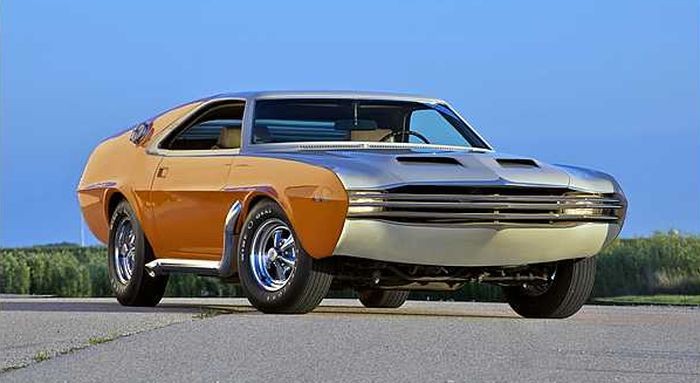
Photo courtesy Mecum Auctions.
AMX-400 (1970) — Show car built by George Barris for the ISCA show circuit. Later used in the television show Banacek. Sold for $100,000 at Mecum’s St. Charles auction in 2009.
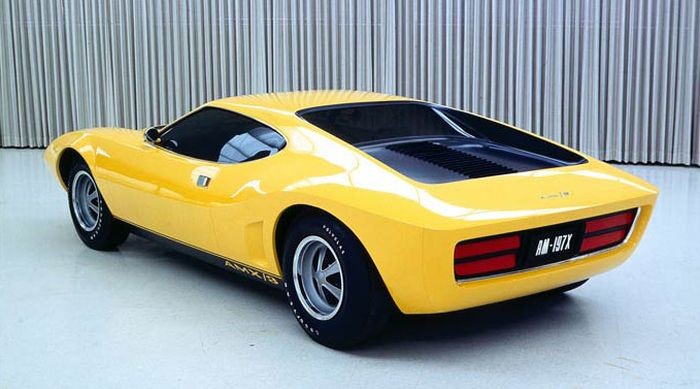
AMX/3 pushmobile. AMC photo.
AMX/3 (1970) — An evolution of the AMX/K and AMX/2, also referred to early in the design stage as AMX-III. Built from steel by Bizzarrini in Livorno, Italy, using AMC 390 V-8s. Two built before AMC gave the rights to Bizzarrini, three more marketed by Bizzarrini, and one more built from spare parts afterward. All six still exist, as does a fiberglass pushmobile that AMC built.

Teague AMX (1968/1971) — Built by Dick Teague to explore various design ideas on the first-generation AMX. Later updated with second-generation AMX front end. Currently owned by Mike Spangler.
AMX Turbo (1981) — One-off based on the Spirit AMX built by AMC as a pace car for the PPG Indy Car World Series. Still exists, placed up for auction in December 2013.
In addition, at least seven iterations of the AMX were marketed as regular production vehicles:
AMX (1968-1970) — The original two-seater model, includes the SS/AMX Super Stock drag racing version, the California 500 special edition, and the Von Piranha special edition.
Javelin AMX (1971-1974) — Four-seater model based on the Javelin.
Classic AMX (1975) — Four-seater model based on the Matador coupe, marketed in Mexico by VAM.
Hornet AMX (1977) — Trim package atop the Hornet.
Concord AMX (1978) — Trim package atop the Concord.
Spirit AMX (1979-1980) — Four-seater model based on the Spirit.
Rally AMX (1979-1983) — Four-seater model based on the Concord, marketed in Mexico by VAM.
There, that should just about cover it. Let us know if we missed any.





.gif)


With such great cars as these being dreamed up and moved on to production (’68 – ’70), it’s no wonder AMC was able to save Chrysler with the Jeep and great engineers!
my little brother had a red AMX/2 Hot Wheels car, I remember picking it up & just staring at it, wishing I had the real thing